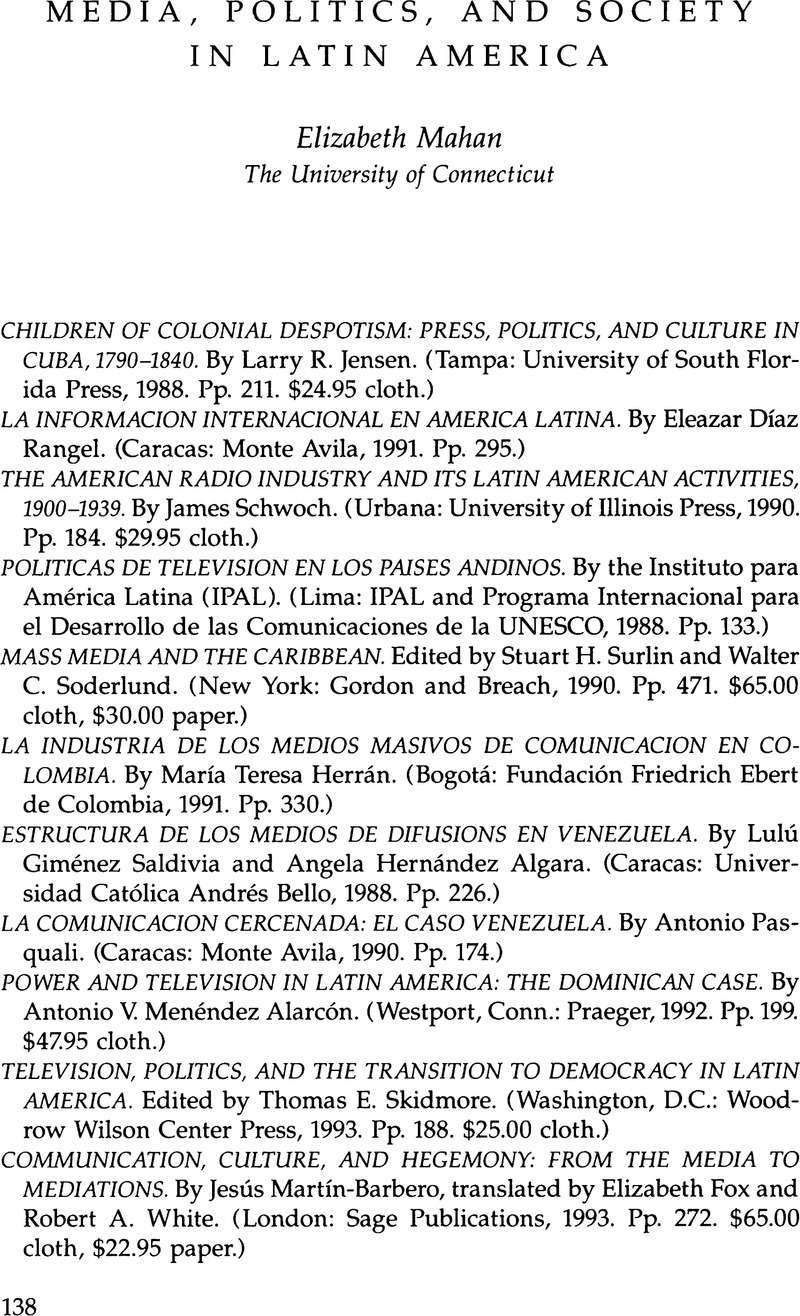Published online by Cambridge University Press: 05 October 2022

1. See also Bruce Underwood, “ALASEI: A New Dimension in Communications Pluralism in Latin America,” Studies in Latin American Popular Culture 6 (1987):289–300.
2. On the evolution of U.S. communications and cultural power, see Emily S. Rosenberg, Spreading the American Dream: American Economic and Cultural Expansion, 1890–1945 (New York: Hill and Wang, 1982). See also Herbert I. Schiller, Mass Communications and American Empire (Boston, Mass.: Beacon, 1969).
3. On the Anglo-French-U.S. competition over establishing submarine cable networks in Latin America, see Daniel R. Headrick, The Invisible Weapon: Telecommunications and International Politics, 1851–1945 (New York: Oxford University Press, 1991).
4. Commercial radio broadcasting, especially in its early days, was highly competitive, and U.S. corporations like RCA were unable to garner the audiences necessary to support their operations or to counter what they considered to be the unfair business practices of their Latin American competitors.
5. Such proliferation in essentially commercial systems exceeds the capacity of the audience to support the system through advertising and therefore hastens concentration of ownership.
6. See Cristina Schwarz and Oscar Jaramillo, “Hispanic American Critical Communication Research in Historical Context,” in Communication and Latin American Society: Trends in Critical Research, 1960–1985, edited by Rita Atwood and Emile McAnany (Madison: University of Wisconsin Press, 1986), 48–75.
7. This definition of newsworthiness recalls Herbert J. Gans, Deciding What's News (New York: Vintage, 1980) and perhaps indicates the extent to which Dominican television journalism mirrors its U.S. counterpart. See also Gabriel Molina, “The Imperatives of Corporate Rationale,” Media, Culture, and Society 9 (1987):159–87. He finds similarly that the economic and political interests of the corporate managers of the Mexican communications conglomerate Televisa play a role in defining the limits of acceptable reporting in Mexico.